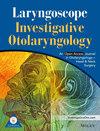Risks Associated With Extent of Surgical Management for Benign, Non-Toxic Goiter
Abstract
Objectives
Surgery for benign, non-toxic thyroid goiter remains the most common indication for thyroidectomy worldwide, yet the optimal surgical extent remains controversial. While total thyroidectomy is assumed to have greater risks than lobectomy, the difference in complications has not been quantified. The objectives of this study are to (1) compare the risk of surgical complications and (2) quantify the magnitude of this risk difference.
Methods
This is a retrospective analysis utilizing the National Surgical Quality Improvement Program (NSQIP) Thyroid-Specific Dataset harmonized with the general NSQIP dataset for the years 2016–2020. The study was designed to determine if total thyroidectomy is independently associated with postoperative complications when compared to thyroid lobectomy using multivariable analyses controlling for confounding factors. Exposure groups were lobectomy (CPT 60220) and total thyroidectomy (CPT 60240). Outcomes included overall complications, thyroidectomy-specific complications (hypocalcemia prior to discharge, hypocalcemia within 30 days of discharge, clinically severe hypocalcemia, recurrent laryngeal nerve dysfunction, neck hematoma), other surgical complications (infections, wound disruption, and blood transfusion), medical complications, unplanned readmission, reoperation, length of stay, and operative time.
Results
Eight thousand nine hundred twenty-nine thyroidectomies were included: 5052 lobectomies and 3877 total thyroidectomies. Total thyroidectomy was associated with significantly greater odds of any complication (OR = 1.8, CI = 1.5–2.2), any thyroidectomy-specific complication (OR = 1.9, CI = 1.6–2.3), increased odds of RLN dysfunction (OR = 1.5, CI = 1.2–1.9), hypocalcemia prior to discharge (OR = 3.8, CI = 2.2–6.7), hypocalcemia after discharge (OR = 4.6, CI = 3.1–6.8), and severe hypocalcemia (OR = 5.4, CI = 3.2–9.0). Rates of unplanned readmission (OR = 1.5, CI = 1.1–2.3), length of hospital stay (+ 0.33 days, CI = 0.1–0.5), and operative time (+ 26.1 min. CI = 23.7–28.6) were also increased in total thyroidectomy.
Conclusions
In this largest study to date, when controlling for comorbidity, extent of disease, and calcium repletion, total thyroidectomy patients had significantly greater rates of surgical and medical complications, as well as readmission. These data should inform shared decision making when determining extent of surgical intervention for this disease.
Level of Evidence
4.


 求助内容:
求助内容: 应助结果提醒方式:
应助结果提醒方式:


